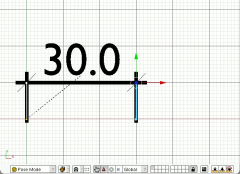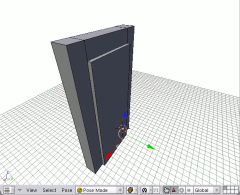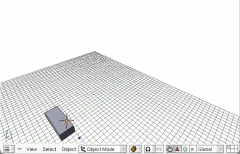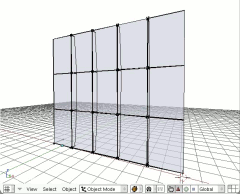Parametric modelling is a term you hear a lot in the fields of engineering and architecture. It is actually a way to define objects in a 3D world:
In classical 3D environment, like Blender for example, objects are defined by their components: for example, we have a cube which has 8 vertices. Each of these vertices has a (x, y, z) position. This group of vertex is what defines our cube. The only way to edit an object is to edit its components, for example by moving some vertices.
In typical parametric modelling, our cube would br defined for example by its (x, y, z) position, a "width" parameter, a "length" parameter and a "height" parameter. This would allow us to modify easily our cube later. I wrote "for example" because the great cool thing about parametric modelling is of course the ability to create your own object types, and give it the parameters you want. For example I would create a door object, give it "width", "frame thickness", "door type" and "opening angle" parameters, and I would have a kind of door block I could use everywhere in my model, but each one with different values for the parameters.
To resume a bit, in Blender, a parametric object would be an object you can modify without entering editmode.
Archicad uses a kind of scripting language, in which you define the parameters and the geometry of your object.
Revit lets you do that all graphically. Basically, you create layout elements, like axis and points, and then you draw a geometry locked onto those layout elements. Finally, you add parameters, also locked to those elements. When you are done, you can change the parameter value, which will move the layout elements accordingly, which in turn will stretch your geometry.
As an interesting third example, new versions of Autocad also try themselves at parametric design (until now only in 2D): You have now "smart" blocks that can contain parameters that can modify the block's geometry , and obviously several instances of the same block can have different value for their parameters.
All of this leads us to think that parametric modelling today is not anymore something that has to be coded right from the very core of the program, but rather something you have to develop by making interaction between objects possible. For example, in the Revit case, interaction between geometry and those layout elements. In the Archicad case, scripts that operate on geometry. Parametric objects are more and more compound objects made of simple elements, assembled graphically rather than hard-coded complicated data structures.
Shapekeys are a way to store different vertex positions in a mesh. You can therefore create for example a door model, and have a "closed" vertices situation and an "open" one. To open your door, just increase your "open" parameter. This is truly what we expect of parametric objects.
Armatures can be used to create much smarter objects. By linking a mesh to an armature, you can have the same behaviour as the Revit objects. You move the bones, and the object is stretched accordingly.
Python scripting is of course the most powerful feature, but since we are architects and not programmers, we'll try to use as little as possible, and make as much as possible with graphical tools.





- Better group selection: If we make compound objects, with an armature and a mesh, you need to be able to select and manipulate that group of objects like any other single object. Blender's object groups just lack a bit of refining, like for example the way to select them. This kind of things is already on the request lists. Since groups are a relatively new feature of Blender, probably the concept will be refined progressively in a near future, so I don't think we need to worry about that.
- Custom properties for objects. This is already a well comented subject in forums. This is really what would allow us to imagine all kind of parameters and behaviour to our new objects. This is already partially implemented in the objects structure, it's nearly here...
- Custom panels: For displaying and manipulating our parameters, we would need custom panels, probably in Object Properties Panel (the F9 window). This is also considered in the same discussions as custom properties, so it's on its way too. Since Blender VIP's are currently talking about it, I'm pretty confident that this will happen soon.
- Object snapping or an automatic way to detect objects or points by proximity. This is already more or less possible by scripting, and several scripts have their try at addressing the problem. The subject is also well commented on forums. This would allow us to make objects that interact with others like for example, a window that automatically opens a hole in a wall when it is placed on it. This is really the part one could create himself, and there is no doubt that it could be solved without any change in Blender code. But, since many people talk and ask for it, maybe someday it will become much easier...
I'll try to start a repository one of these days.
I hope this was interesting. As always, don't hesitate to mail me if I can clarify something.
Yorik - yorik.orgfree.com